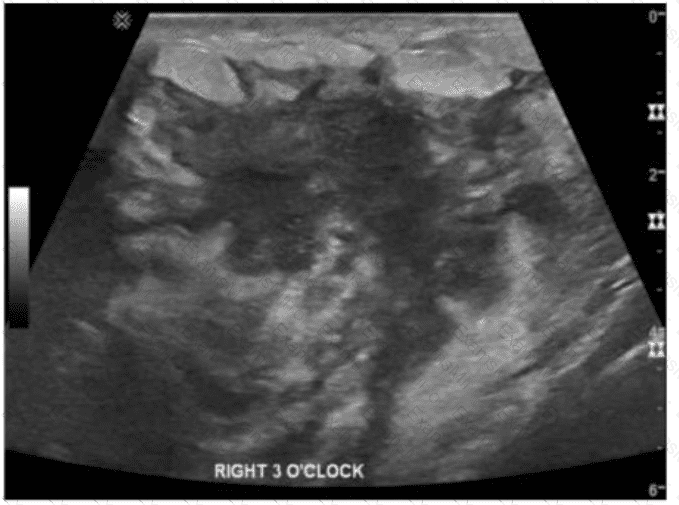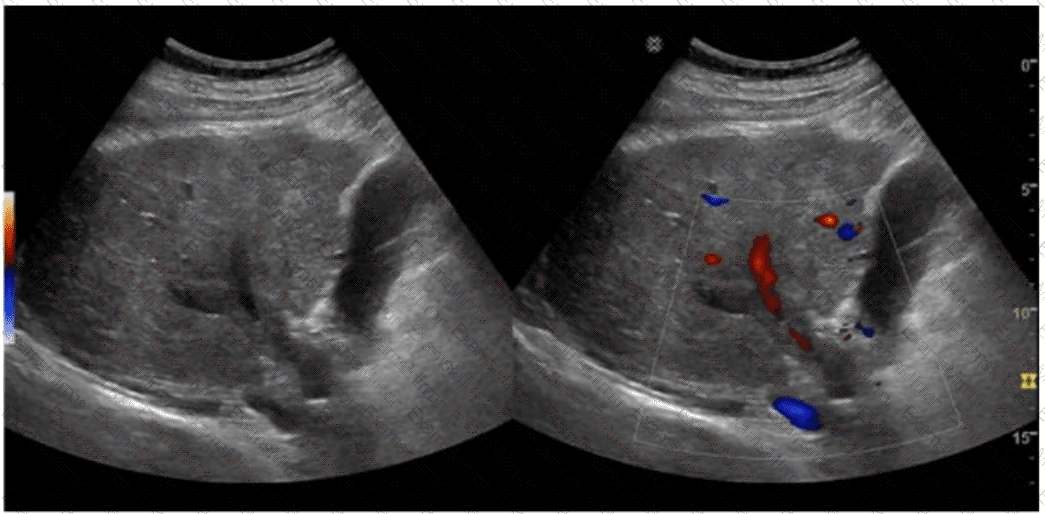Cyber Monday Special Limited Time 70% Discount Offer - Ends in 0d 00h 00m 00s - Coupon code = getmirror
Pass the ARDMS RDMS AB-Abdomen Questions and answers with ExamsMirror
Exam AB-Abdomen Premium Access
View all detail and faqs for the AB-Abdomen exam
593 Students Passed
90% Average Score
92% Same Questions
Which condition is demonstrated in this image of a febrile patient with breast redness and tenderness?

Which characteristic is associated with complex pleural effusion?
A patient with hepatocellular carcinoma presents for a paracentesis. Which lab value is the most pertinent to the procedure?
Which type of hernia is located medial to the inferior epigastric artery?
A 60-year-old man presents to the emergency room, complaining of tearing pain in the chest and abdomen. Blood pressure readings from the two arms show a difference of more than 20 mm. Which ultrasound finding is most likely associated with this presentation?
Which disease process may cause numerous shadowing calcifications to form within the spleen?
Which outcome would be present if the sample volume gate is larger than the examined vessel?
The absence of which sonographic finding indicates the acute process depicted in these images?

Which condition is most likely the cause of claudication experienced two weeks after this image was obtained?

Which cause of transudative pleural effusion is most common?
TOP CODES
Top selling exam codes in the certification world, popular, in demand and updated to help you pass on the first try.
